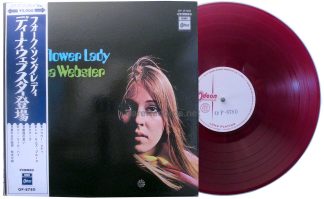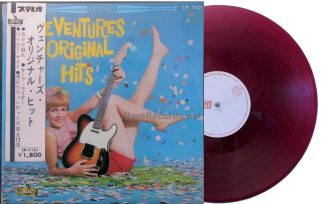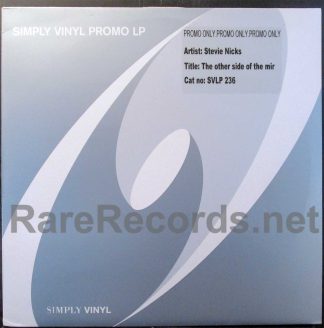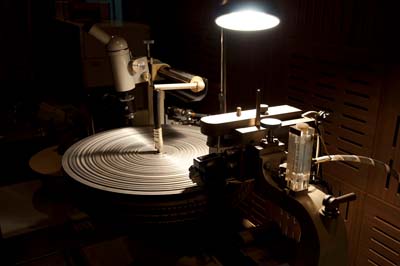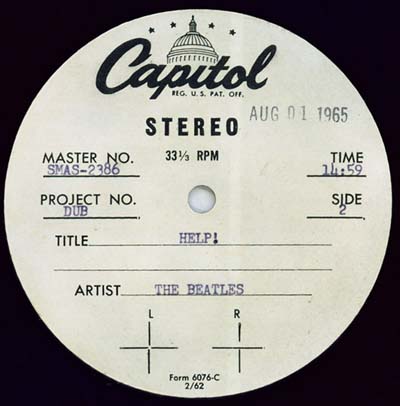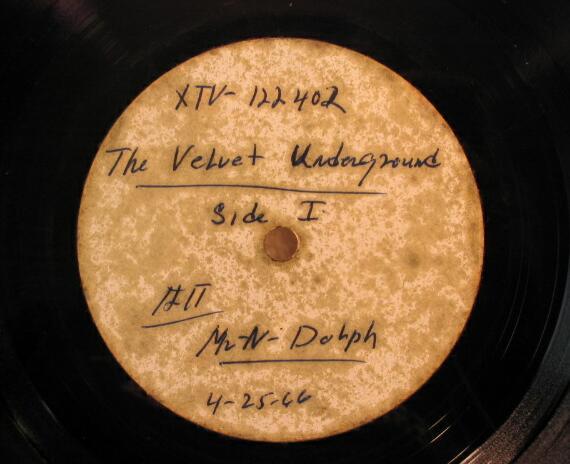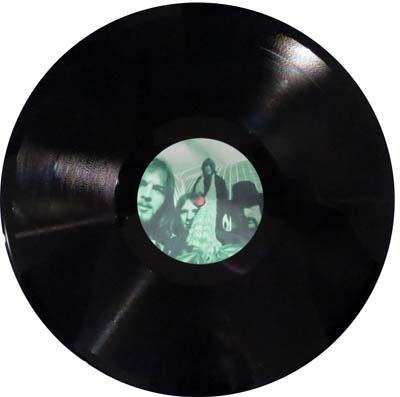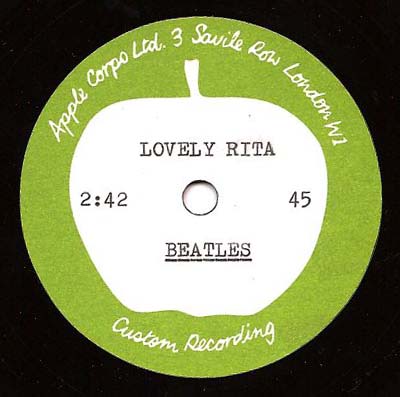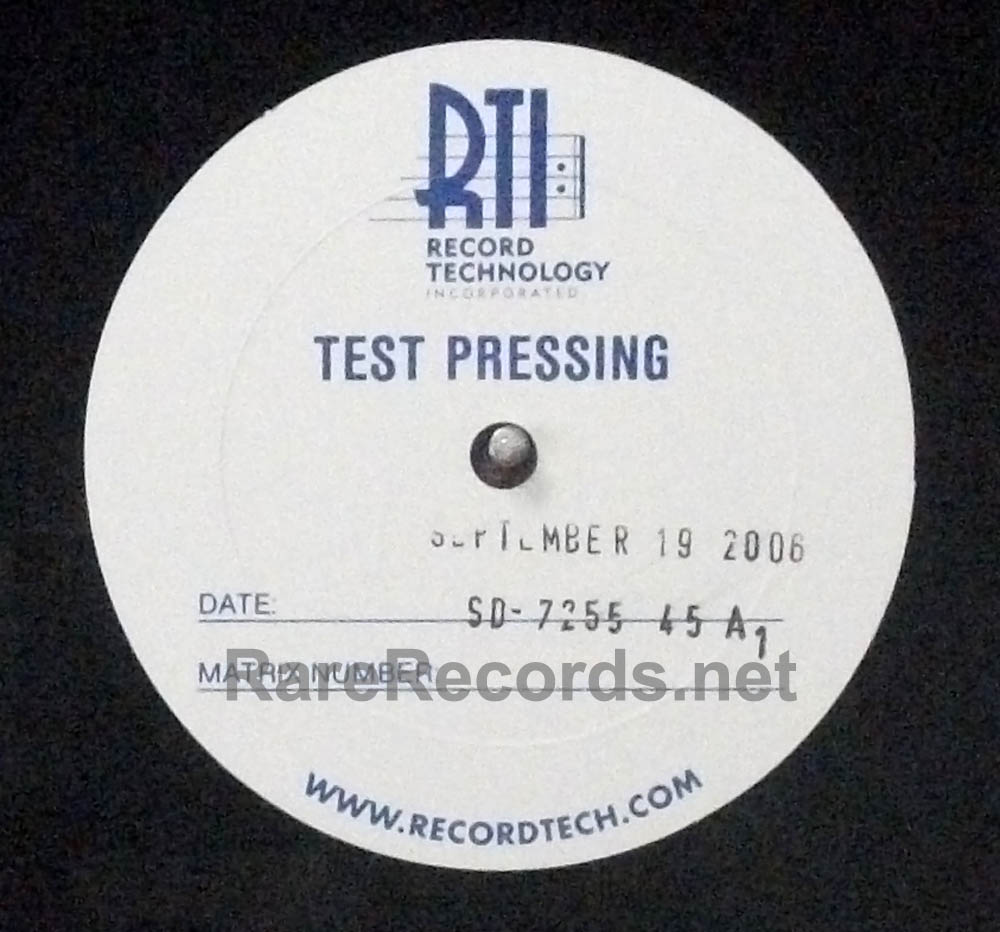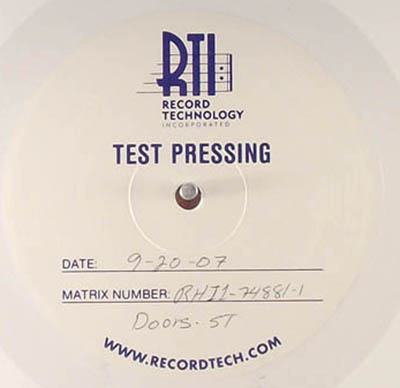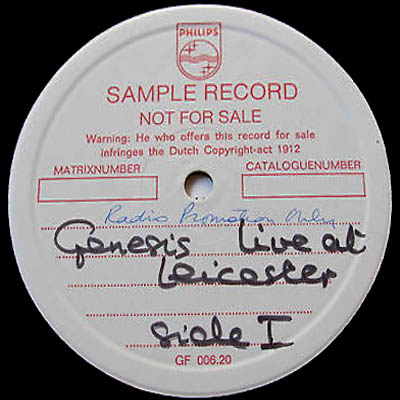Picture Discs
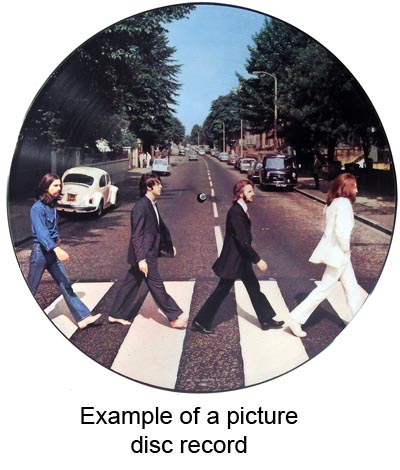 Picture discs are records that appear to have pictures, images, or graphics on their playing surface. While most phonograph records are black, except for the label in the center, picture discs may display a photograph or artwork over the entire playing surface.
Picture discs are records that appear to have pictures, images, or graphics on their playing surface. While most phonograph records are black, except for the label in the center, picture discs may display a photograph or artwork over the entire playing surface.
Picture discs look like round photographs, though unlike photographs, they can also play music.
From a manufacturing standpoint, picture discs consist of a solid core, made of plastic, paper, or metal, that has a paper image placed over it. The core and photo are then covered with clear vinyl and the grooves are pressed on top of them using traditional record presses.
This process necessarily uses less vinyl in the grooves than standard records, and often yields less-than-optimal sound quality. Because of their substandard sound quality, most picture discs are produced as limited edition products, generally targeted at collectors, and are intended to supplement the supply of standard black vinyl records.
Browse by Category
Click any of the links below to jump to each category:
History of Picture Discs
Vogue Picture Discs
Children’s Picture Discs
Cardboard Picture Discs
Picture Disc Albums
Prototype Picture Discs
Bootleg Picture Discs
Interview Picture Discs
Shaped Picture Discs
Picture Discs Today
Featured Products
-
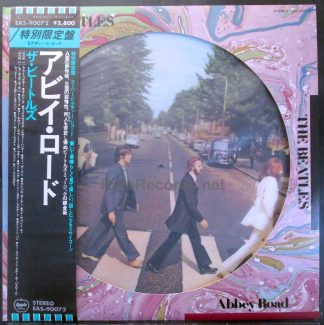
Beatles – Abbey Road 1978 Japan picture disc LP with obi
$150.00Free U.S. shipping! A limited edition Japanese picture disc issue of the Beatles Abbey Road LP, including the original obi.Add to cart -
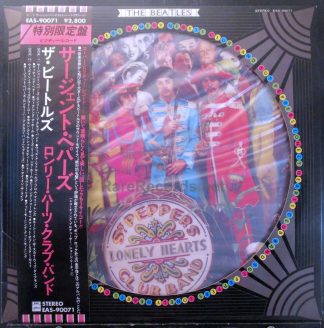
Beatles – Sgt. Pepper Japan picture disc LP with obi
$125.00Free U.S. shipping! A limited edition Japanese picture disc pressing of Sgt. Pepper's Lonely Hearts Club Band by the Beatles, including the original obi.Add to cart -
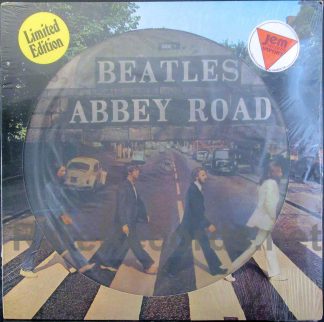
Beatles – Abbey Road sealed 1979 Holland picture disc
$125.00Free U.S. shipping! A still sealed copy of the limited edition picture disc of Abbey Road by the Beatles, issued in the Netherlands in 1979.Add to cart
Click here to view our selection of picture discs.
History of Picture Discs
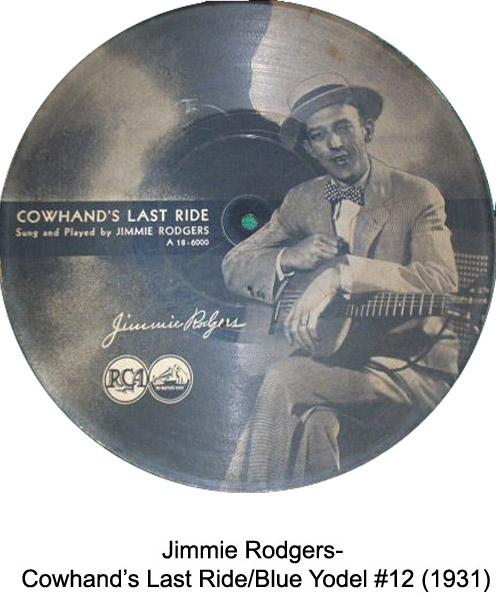 While picture discs of albums date from the early 1970s, the technology isn’t new. Postcards laminated with playable records appeared during the first decade of the 20th century.
While picture discs of albums date from the early 1970s, the technology isn’t new. Postcards laminated with playable records appeared during the first decade of the 20th century.
As these postcards were constructed differently from later versions, they are not normally considered as picture discs in the contemporary sense. The first commercial examples of picture discs using standard core-photo-vinyl construction date from the early 1930s, where they appeared in the form of ten inch, 78 RPM singles using a paper core with a shellac playing surface.
One of the earliest commercially released picture discs was a 78 RPM record by country singer Jimmie Rodgers – Cowhand’s Last Ride/Blue Yodel No. 12, released in 1931 by RCA Records.
The record is quite rare today, and sells for several thousand dollars when it turns up for sale. These early picture disc examples were quite fragile, and one rarely encounters a copy of the Jimmie Rodgers record that doesn’t have cracks or chips in the playing surface.
Early examples of picture discs had numerous problems – they were hard to manufacture, had a higher than average defect rate and suffered from poor sound quality. The sound quality issue wasn’t all that noticeable in the era of 78 RPM records, however, as most players were also of poor quality and a relatively high noise level during playback was pretty common for all 78 RPM records.
The various problems associated with the manufacture of picture discs, including the higher manufacturing costs, made them a relative rarity in the marketplace during the 1930s. During the Depression, few people had much in the way of disposable income, and the higher retail price of picture disc records made them a tough sell in a depressed economy. As the 1940s arrived, wartime rationing made producing anything but a standard black record impossible, as materials of any kind were relatively scarce through the end of 1945.
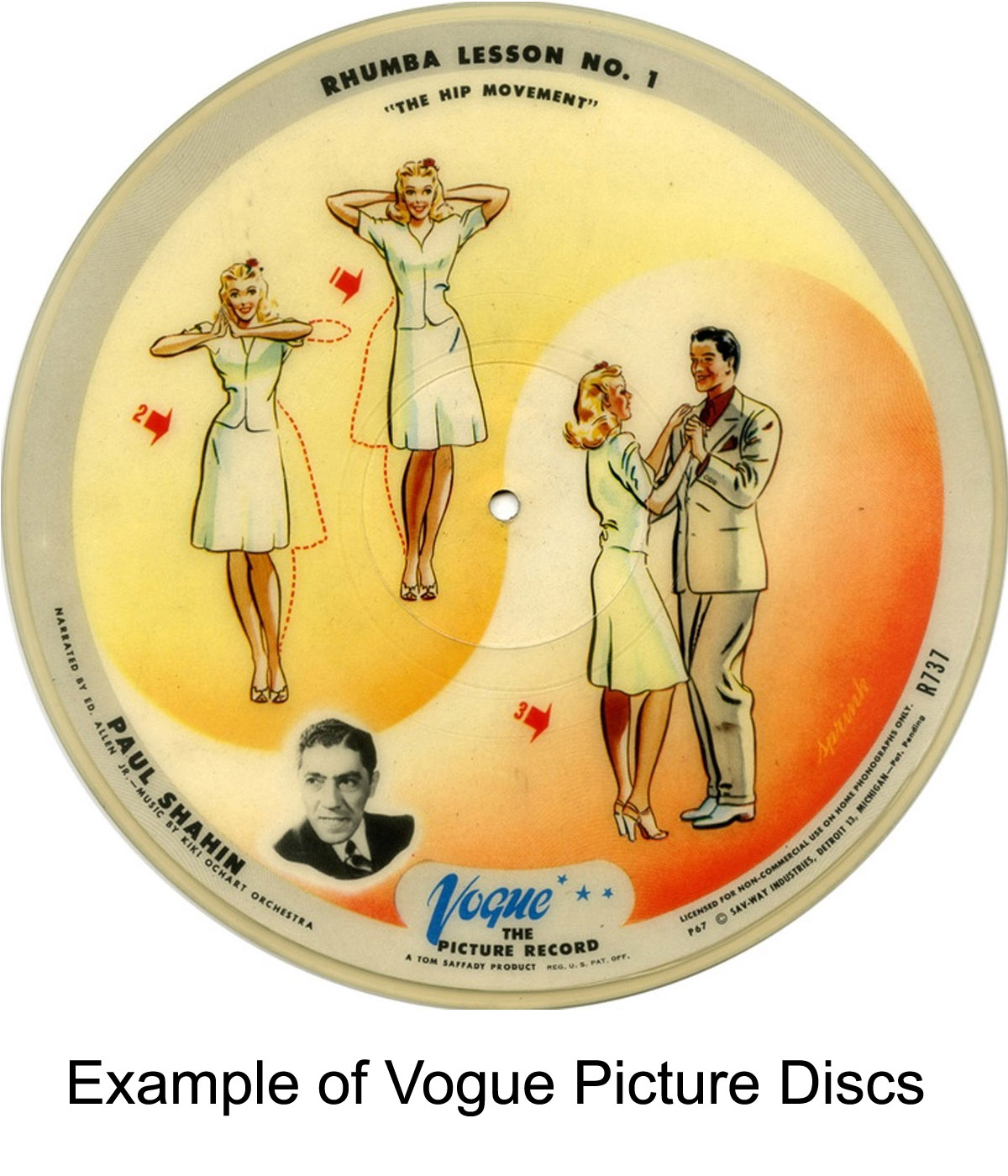 Shortly after the end of World War II, a company called Vogue Records, from Detroit, Michigan, started a record label with the unique business model of selling only picture discs.
Shortly after the end of World War II, a company called Vogue Records, from Detroit, Michigan, started a record label with the unique business model of selling only picture discs.
Their product was of a much higher quality than earlier pressings, and included much better sound quality than had been seen with the format.
Part of this had to do with the company’s manufacturing process, which used a solid aluminum core which was covered with a playing surface that was not too different from modern vinyl.
Unlike RCA’s early picture discs, which featured black and white artwork, Vogue’s products used eye-catching, bright, colorful graphics, making the product difficult to ignore in the record store.
Vogue was only in business for a year or so, releasing roughly 70 different titles during that time. In addition to those 70 titles, a number of “prototype” examples of unreleased Vogue titles have surfaced over the years. While Vogue picture discs were reasonably popular then and remain so today with collectors, several factors hindered the company’s success:
Their records cost more to produce than that of their competitors, and thus carried a retail price that was almost twice the price of their competitors’ products.
The company’s roster of talent was modest, and they didn’t have any big stars signed to the label. Most of the best-known recording artists of the day were locked into contracts that required them to record exclusively for their record labels, and Vogue found it difficult to sign artists who were likely to have hits.
The company’s location in Detroit, far from the music centers of New York or Los Angeles, likely contributed to the problem with a lack of talent at the label.
While Vogue Records was in business for a short time, their picture discs are surprisingly popular among collectors today, with several titles regularly selling for more than $500 on the collector’s market. Several unreleased prototypes have sold for as much as $8000.
Their appeal today is much as it was in the 1940s – they are attractive records offering colorful examples of period art and music in a single package. Due to their high manufacturing quality, quite a few Vogue picture discs survive today, and more common titles can be purchased for as little as $10 or so.
The demise of Vogue in 1947 more or less brought an end to the commercial manufacture of picture discs, at least those intended for the adult market. Nearly 25 years would pass before a record company again attempted to sell picture discs as anything other than a novelty item for children.
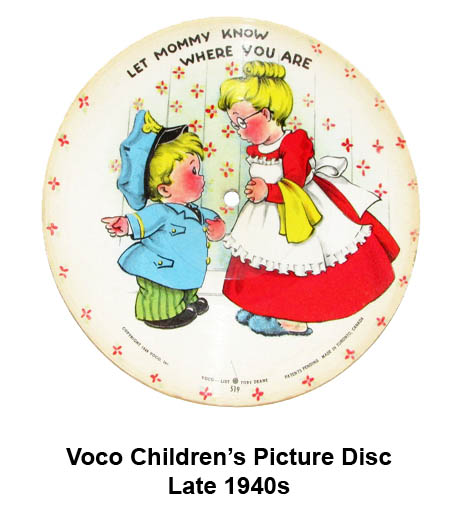 While we are not aware of any picture discs for the adult market that were offered for sale in the 1950s, we do know of several companies that marketed them to children during this time.
While we are not aware of any picture discs for the adult market that were offered for sale in the 1950s, we do know of several companies that marketed them to children during this time.
Voco Records and the Record Guild of America produced picture discs of children’s music using a rather odd format – their records were seven inches in size, like a standard 45 RPM single, but they played at 78 RPM.
While not all of the company’s titles were released as picture discs, many of them were. To save costs, these picture discs were manufactured without a reinforcing core, simply laminating a playing surface over a printed image, which was probably cardboard.
A few Record Guild of America titles survive today and they tend to sell for modest prices on the collector’s market, probably due to the fact that they were products for children, leaving many surviving examples in poor condition.
Another company called Voco Records made picture discs for children in the 1950s. These were seven inches in size and appear to have been manufactured at both 45 and 78 RPM speeds. Not much is known about this company, other than the fact that they were made in Toronto, Canada. The few examples we’ve seen were quite attractive and colorful, and reminiscent of the Vogue Records from a decade earlier.
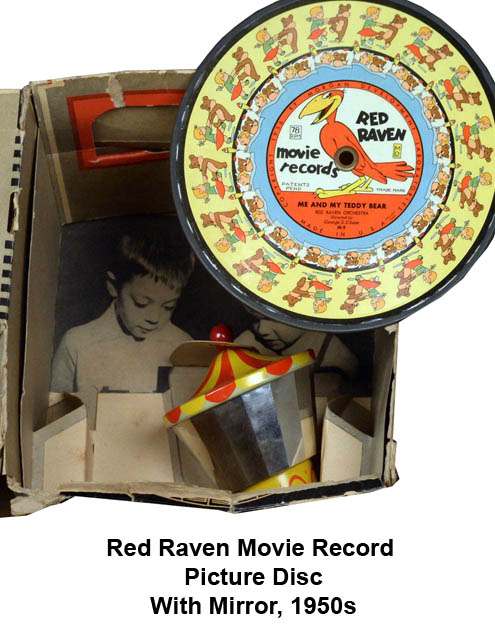 One other unusual variant on picture discs for children that appeared in the 1950s was a product called Red Raven Movie Records. These were picture discs that had a series of 16 still images printed on the disc around the record’s perimeter.
One other unusual variant on picture discs for children that appeared in the 1950s was a product called Red Raven Movie Records. These were picture discs that had a series of 16 still images printed on the disc around the record’s perimeter.
Each of the images was one frame of a short animation sequence that repeated every time the record (which played at 78 RPM) made a rotation on the phonograph. In order to view the animation, a small device with 16 mirrors had to be placed on the spindle of the phonograph.
Red Raven’s picture discs were short-lived, probably due to the high cost of manufacturing. After a short time of making picture discs, the company cut costs by producing colored vinyl records with an oversized label. The labels had the animation sequence printed on them, though the playable part of the record was simply colored vinyl.
Red Raven records are not to difficult to find today, though the mirrored device that’s necessary to view the animation sequence is quite hard to find. Without it, you’re just looking at an interesting design that’s spinning around while the record plays.
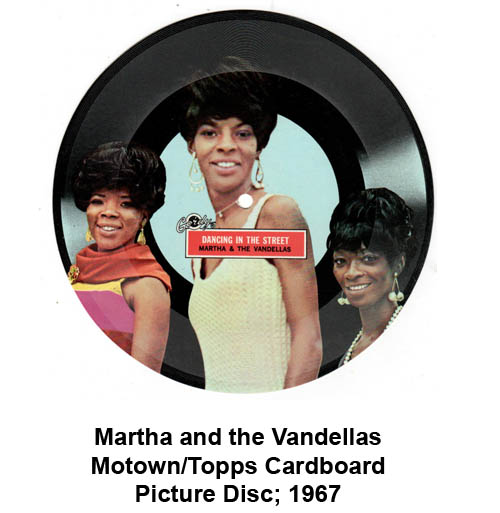 In the late 1960s, there was a short-lived revival of sorts regarding picture discs for the teen market. In 1967, Motown Records released a set of 16 different 7” 45 RPM cardboard picture discs through Topps, the company that was then best known for producing baseball cards.
In the late 1960s, there was a short-lived revival of sorts regarding picture discs for the teen market. In 1967, Motown Records released a set of 16 different 7” 45 RPM cardboard picture discs through Topps, the company that was then best known for producing baseball cards.
These picture discs had a photo of the artist on one side, which was the only side with a playing surface. The other side had text information about the artist and the song.
These are the only picture discs of this type that we’ve seen that were sold at retail during the 1960s.
Artists and titles in this series were:
#1 Diana Ross & The Supremes – Baby Love
#2 Diana Ross & The Supremes – Stop In The Name Of Love
#3 Diana Ross & The Supremes – Where Did Our Love Go
#4 The Temptations – My Girl
#5 The Four Tops – I Can’t Help Myself
#6 Marvin Gaye – How Sweet It Is (To Be Loved By You)
#7 Martha & The Vandellas – Dancing In The Street
#8 Stevie Wonder – Fingertips – Part 2
#9 Four Tops – Baby I Need Your Loving
#10 Stevie Wonder – Uptight (Everything’s Alright)
#11 Smokey Robinson & The Miracles – Shop Around
#12 The Marvelettes – Please Mr. Postman
#13 The Temptations – The Way You Do The Things You Do
#14 Martha Reeves & The Vandellas – Love Is Like A Heat Wave
#15 Diana Ross & The Supremes – Come See About Me
#16 Diana Ross & The Supremes – My World Is Empty Without You
A couple of years later, cardboard picture discs were given away free by Post Cereals as an incentive to get customers to buy the cereal. It was common practice at that time to include a small toy or trinket in a cereal box as an incentive, but these records were actually printed on the back of the box itself.
 Adding to the incentive to buy was the fact that there were usually several different records available, which were numbered on the label.
Adding to the incentive to buy was the fact that there were usually several different records available, which were numbered on the label.
This gave buyers reason to purchase more than one box of cereal. Over the years, we’ve seen titles by the Monkees, the Archies, the Jackson 5ive, and Bobby Sherman.
There were usually four different picture discs available for these promotions, and most of the titles included multiple songs. While the sound quality was poor, the opportunity to get four or five songs by a popular artist at no extra charge when buying a box of cereal was a pretty good deal.
A surprising number of these cardboard cereal box picture discs survive today and they tend to sell for relatively modest ($10 or so) prices. There are exceptions, however – surviving examples that included the complete cereal box with the record still attached have sold for upwards of $100.
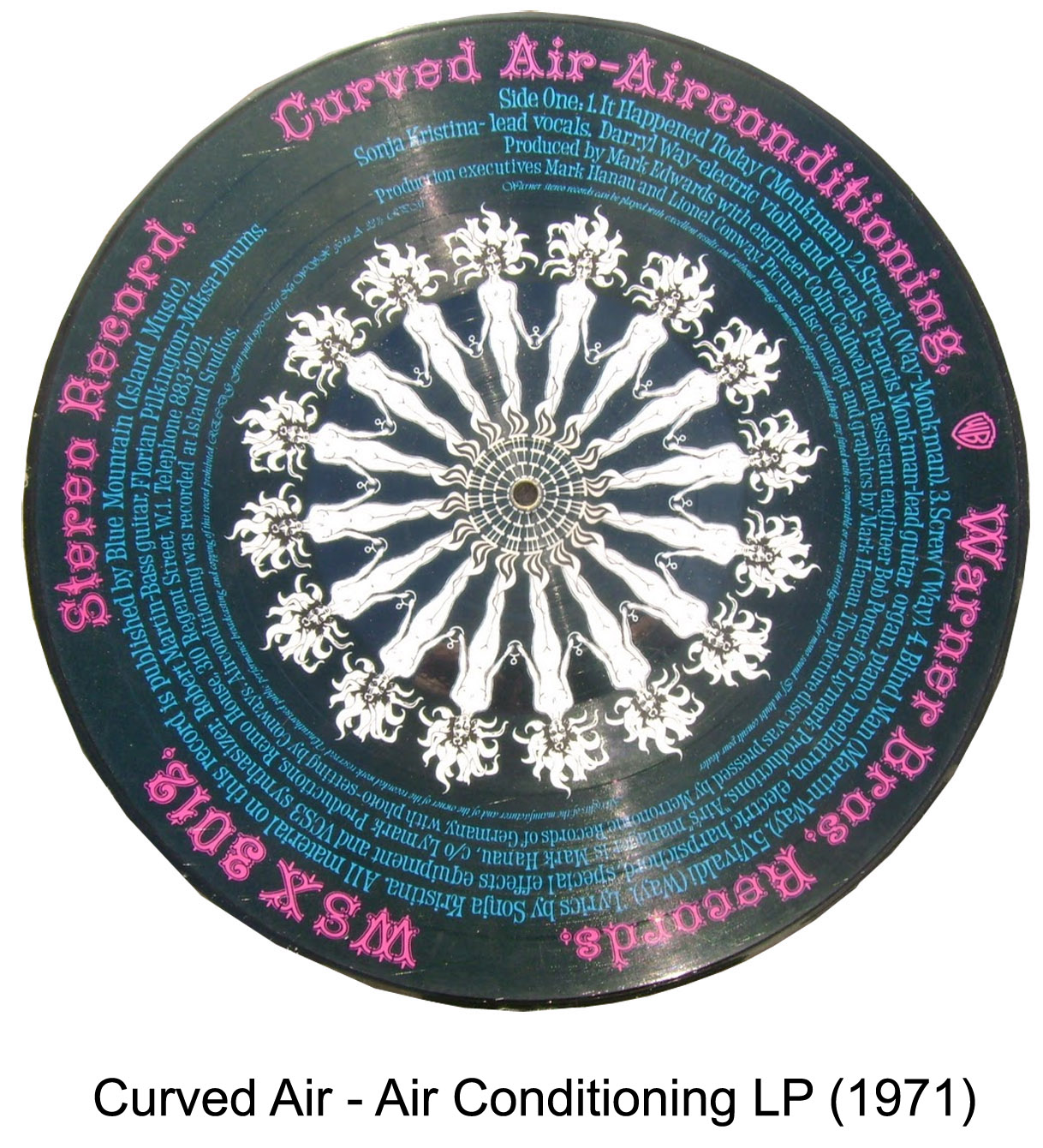 After a period of a quarter century in which no picture discs appeared on the market for adult audiences, the first “modern” picture discs began to appear in 1971.
After a period of a quarter century in which no picture discs appeared on the market for adult audiences, the first “modern” picture discs began to appear in 1971.
The first of which was the debut album by British progressive rock band Curved Air, Air Conditioning. This album, released as picture discs only in the United Kingdom, was certainly eye-catching, though it, like its predecessors, suffered from poor sound quality.
Due to complaints from buyers, the picture disc edition was limited to a pressing of 10,000 copies, at which time it was replaced by a standard, black vinyl edition.
In 1973, a second LP picture disc appeared, again from the UK, entitled Magical Love by the progressive rock band Saturnalia. This disc also had a holographic label in the center that was attached using glue. Over time, most of these have fallen off, and finding a copy of the Saturnalia disc with the label intact these days is somewhat difficult. Again, these picture discs were plagued by sound problems, and didn’t sell particularly well. As far as we know, that particular album was never reissued on vinyl, making it possibly a picture disc-only release.
In the late 1970s, American record companies began to send out picture discs as promotional items to programmers at radio stations. These picture discs were largely produced by an independent company called Fitzgerald-Hartley, under contract to the major record labels. Most of the picture discs produced in the United States in the late 1970s carry a Fitzgerald-Hartley “PicDisc” logo.
You can see a short video of picture discs being manufactured below. (Caution!: Video includes loud music!)
These promotional picture discs, unlike most records sent to radio stations, weren’t really intended for airplay, as the sound quality wasn’t good enough for that purpose. They were eye catching, however, and record companies hoped they’d get enough attention from radio station personnel to get the records played on the radio.
It isn’t known as to whether they actually helped in that regard, but these picture discs, including titles by Meat Loaf, Bob Welch, Elvis Costello and Bruce Springsteen, along with long-forgotten bands such as Liar, Fandango, and The Cryers, caught the attention of collectors, who were soon paying up to $100 (in 1970s dollars) for records that the record companies had been giving away for free.
A few of the titles released in the late 1970s as promotional picture discs include:
Joe Cocker – Luxury You Can Afford
Elvis Costello – My Aim is True/This Year’s Model (tracks from both albums)
Peter Frampton – I’m in You
The Jacksons – Going Places and The Jacksons
Elton John – A Single Man (later released commercially)
Kansas – Point of Know Return
Meat Loaf – Bat Out of Hell (black cover; burgundy cover copies were sold commercially later)
Molly Hatchet – Molly Hatchet, Flirtin’ With Disaster, Beatin’ the Odds, Take No Prisoners
Willie Nelson – Stardust
Bob Seger – Night Moves
Bruce Springsteen – Darkness on the Edge of Town
Starcastle – Citadel
Toto – Toto
Bob Welch – French Kiss
Warren Zevon – Werewolves of London (12” single)
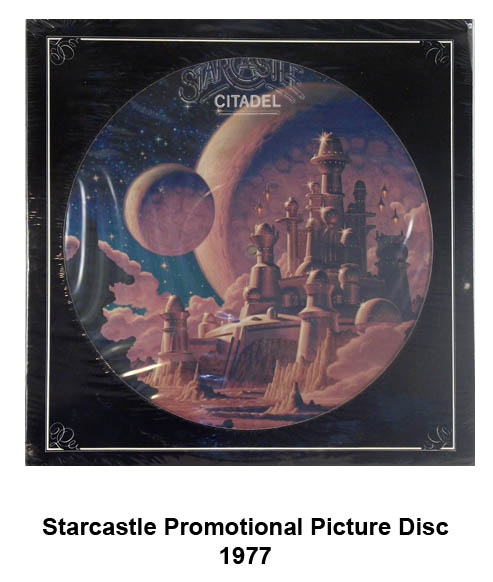 The record companies quickly realized that they had a product for which buyers would gladly pay a premium, and by 1978, commercially released picture discs began to appear on the market.
The record companies quickly realized that they had a product for which buyers would gladly pay a premium, and by 1978, commercially released picture discs began to appear on the market.
The first commercially produced album picture disc was released in early 1978. Titled To Elvis: Love Still Burning, the disc, issued on the tiny Fotoplay label, featured a painting of Elvis Presley on the disc, though the material on the album consisted of other artists performing Elvis songs.
The record, which was, as far as we know, the only record that Fotoplay ever released, was deemed significant enough to merit a cover story in Billboard magazine in August of that year.
Shortly thereafter, Mushroom Records issued a picture disc edition of Heart’s Magazine LP in a “limited” edition of 100,000 copies, along with another 30,000 copies in Canada. Each copy was numbered on the back cover, with the number expressed as a fraction, like this: 15355/100,000. Magazine was the first commercial picture disc album that was widely available for sale, as the album was available for sale by all of the major record chains.
The record sold so well that Mushroom actually pressed more than 100,000 copies. We once saw one that was numbered at 105,000 or so, making the numbering on the cover look rather strange: 105,857/100,000.
Not surprisingly, picture disc copies of Magazine, despite Heart’s decades of success, are not particularly hard to find, nor do they sell for a lot of money today. At any given time, there are 50-75 copies for sale on eBay, and most of them are still sealed and unplayed, nearly 40 years after their initial release.
The success of the Elvis and Heart LPs led to a number of releases in picture disc form by the major record companies, including titles by a number of then-famous artists. While all of these titles were manufactured as limited editions, not all of them were numbered.
Titles released between 1978 and 1980 in the United States included:
The Beatles – Abbey Road and Sgt. Pepper’s Lonely Hearts Club Band
The Bee Gees – Spirits Having Flown
Blondie – Parallel Lines
Boston – Boston
The Brothers Johnson – Blam!
Cher – Take Me Home
Peter Frampton – Frampton Comes Alive! (single album edition of the two record set)
Heart – Dreamboat Annie
Jefferson Starship – Gold
Kiss – solo albums by Peter Criss, Ace Frehley, Gene Simmons, and Paul Stanley
Barry Manilow – Greatest Hits (an unusual two record picture disc set)
Paul McCartney & Wings – Band on the Run
Meat Loaf – Bat Out of Hell (burgundy cover; black cover copies were promotional)
Pink Floyd – The Dark Side of the Moon
Elvis Presley – A Legendary Performer, Volume 3
Linda Ronstadt – Living in the USA
Rush – Hemispheres
Bob Seger – Stranger in Town
Steve Miller – Book of Dreams
Rod Stewart – Blondes Have More Fun
Styx – Pieces of Eight
The Who – Who Are You?
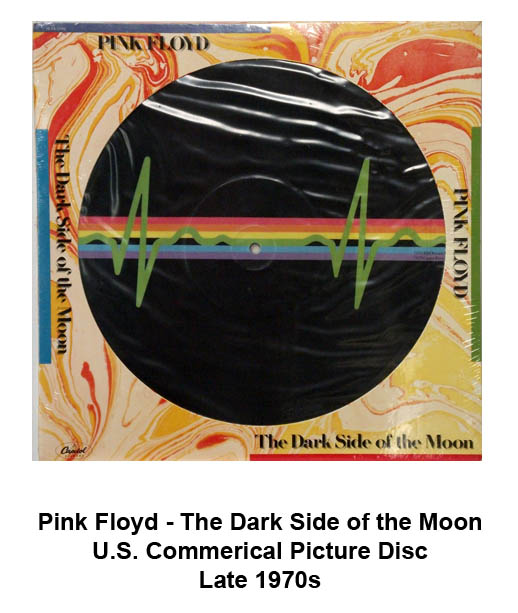 For a short time in the late 1970s, bins at records stores everywhere were full of picture discs, and the stores that sold imported pressings from Europe usually had a few titles for sale that weren’t available in the states.
For a short time in the late 1970s, bins at records stores everywhere were full of picture discs, and the stores that sold imported pressings from Europe usually had a few titles for sale that weren’t available in the states.
At a time when record albums had a suggested retail price of $7.98, picture discs of the same titles had a list price of nearly double that, at $13.98. That equates to about $46 in 2015 dollars, and this high pricing, combined with the relatively poor sound quality of picture discs, soon came back to haunt the record companies.
Many consumers returned their expensive picture discs to the stores as defective, some due to sound quality issues and others because they were warped.
Part of the warping problem had to do with the die-cut covers used to sell the records; most were sold in cardboard covers with an 8” circle cut out to allow the record, which was enclosed in a clear plastic inner sleeve, to be seen by potential buyers. These covers weren’t as sturdy as regular album covers, and the combination of poor cover design and tight shrink wrap led to a lot of warped picture discs.
The record companies temporarily worked around this problem by printing a disclaimer on the cover, usually with some variation of – “Limited Picture Edition – Sound quality may not be comparable to conventional edition.” The record companies then refused to take returns on picture discs, and stores began to sell them on an “as-is” basis with no return privileges for buyers.
By 1980, picture discs could often be found in the cutout bargain bins, usually with holes punched in the cover or with a corner of the cover clipped off to indicate that it was a clearance item. We recall seeing hundreds of solo album picture discs by members of Kiss in the bargain bins, often with prices as low as 99¢. Ironically, those titles that were remaindered several decades ago are commanding premium prices today as collectibles.
Since 1980, record companies worldwide have occasionally released picture discs, though they are usually limited in production to a few thousand copies. In the United Kingdom, the format is usually used only for singles, rather than albums.
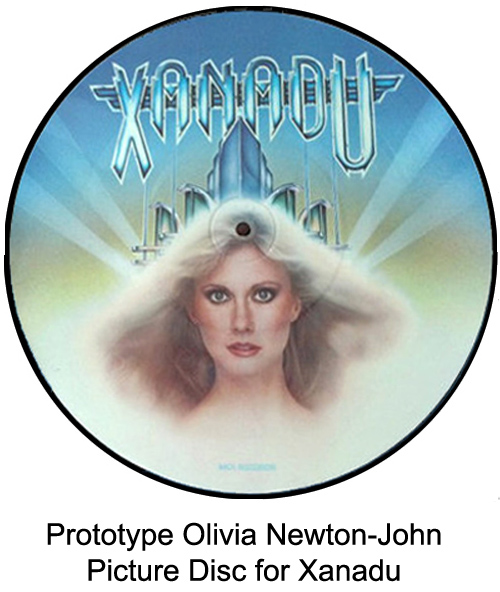 Collectors eagerly seek out picture discs of records by artists they collect and admire, and some of these records can sell for hundreds, or even thousands of dollars, particularly those items that exist only as prototypes.
Collectors eagerly seek out picture discs of records by artists they collect and admire, and some of these records can sell for hundreds, or even thousands of dollars, particularly those items that exist only as prototypes.
These would be records which were intended to be issued either commercially or as a promotional item in picture disc form, but for whatever reason, were not. These titles are often pressed in very small quantities; in some cases, perhaps as few as ten.
One of the rarest such examples is a ten inch record of the single, Xanadu,by Olivia Newton-John and the Electric Light Orchestra, intended to be created as a promotional item, but ultimately rejected by the record company.
As such, fewer than 50 of these were produced as prototypes, and copies have sold for as much as $10,000 at auction.
Another example was the single “Don’t Stand So Close to Me” by the Police, which exists as a prototype picture disc depicting only a few colored squares. Another Police prototype is an odd square picture disc depicting the CBS logo. This is odd, as the Police had no association with CBS Records.
This particular disc was probably made as a test of cutting shapes, and the employees at the pressing plant simply used whatever stampers were available at the time, leading to the creation of a rare Police collectible.
A 1976 LP by Dolly Parton, All I Can Do, was pressed as a picture disc for then-RCA executive Jozsef Bellak at his request. While rumors exist that 2-3 of these were made, only one is currently known to exist – it was Bellak’s personal copy and it was sold for $1500 in 2012.
 Bootleg records, or records containing music that has been released without the knowledge or permission of the artist whose music appears on the record, have been around for decades.
Bootleg records, or records containing music that has been released without the knowledge or permission of the artist whose music appears on the record, have been around for decades.
Bootleg records became quite popular in the early 1970s, when a number of individuals discovered that the copyright laws then in effect didn’t prohibit them from releasing live and unreleased material by popular artists such as the Beatles, Led Zeppelin or the Rolling Stones.
Starting in about 1979, bootleg picture discs began to appear on the market, offering much of the same material that had been previously released by labels such as the Trademark of Quality, The Amazing Kornyfone Record Label (TAKRL), Wizardo and Rubber Dubber. Early bootleg picture discs by the Beatles included the Beatles Decca demo recordings, an LP called The Beatles in Italy, and a live recording of their 1966 performance in Japan.
Other bootleg picture discs to be appear over the years include titles by Madonna, Metallica, Led Zeppelin and the Rolling Stones, among others. As is usually the case with bootleg recordings, the sound quality of these releases varies widely from title to title. Adding to the suspect sound quality is the noisiness of the picture disc itself. Still, collectors usually flock to buy these releases, as they are both unusual and limited in production.
While bootleg picture discs aren’t terribly common, they have appeared regularly over the past 35 years or so and are still manufactured to this day.
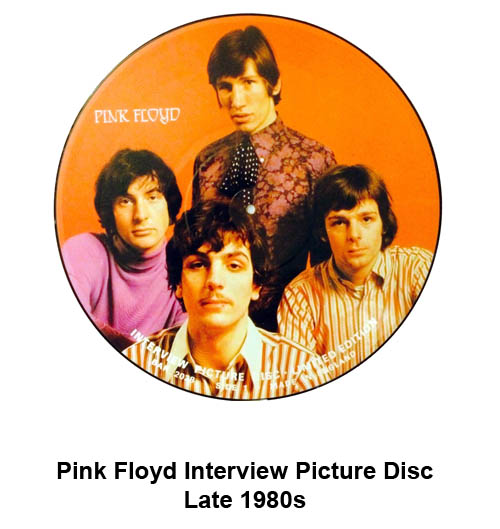 An interesting variation on bootlegs were the interview picture discs that began to appear on the market in the mid-1980s.
An interesting variation on bootlegs were the interview picture discs that began to appear on the market in the mid-1980s.
While it is illegal for someone to release music recordings of an artist with whom they do not have a contractual agreement, it is not illegal to release recordings of that artist simply speaking.
This led to several companies releasing “interview” picture disc albums that featured nice photos of the artist or band on the record itself but only included recorded interviews with the artists within the grooves. This allowed companies to sell picture disc albums by famous artists without having to be concerned with violating copyright laws.
Because these records do not contain any actual music, they draw less attention from collectors than authorized releases that contain music, though some older ones, particularly those by highly collectible artists such as David Bowie, Pink Floyd, or Madonna, often sell for $40 to $60 when they turn up for sale.
 After the success of promotional picture disc albums in gathering attention for artists’ new releases, the practice of releasing promotional picture discs was extended to singles.
After the success of promotional picture disc albums in gathering attention for artists’ new releases, the practice of releasing promotional picture discs was extended to singles.
A few promotional titles were released in picture disc form as 12” singles and after that, a few were sent to radio stations as 7” picture discs.
The next step in the evolution of the modern picture disc was the development of die-cut, or “shaped” picture discs. These were manufactured at a full 12” size, but then cut to a shape that was something other than round. The grooves were still round, of course, so the record could be played, but the outer edge might be cut to all manner of intricate shapes.
The first of these shaped promotional picture discs was a record of about 10” in size that was shaped like an octagon for the Toto single “Georgy Porgy.” This was soon followed by “Message in a Bottle” by the Police, which was cut to the shape of a star-shaped police badge.
Commercial shaped picture discs soon followed, though the format has always been far more popular in the UK than in the United States. As the records are pressed at a 12” size before having material cut away, these picture discs are always used for singles, rather than albums.
A few examples of shaped picture discs to have been released over the years:
AC/DC – Danger (fly-shaped)
Heart – Nothin’ at All (heart shape)
Elton John – I’m Still Standing (piano shape)
Madonna – Into the Groove (heart-shaped), Lucky Star (star-shaped)
Motley Crue – Smokin’ in the Boys Room (comedy and tragedy masks shaped)
The Police – Message in a Bottle, Don’t Stand So Close to Me, Roxanne (all badge-shaped)
Prince – Purple Rain (motorcycle shape), Paisley Park (balloon shape)
Rush – Countdown (space shuttle shape)
Toto – Georgy Porgy, Africa (Africa-shaped)
ZZ Top – Gimme All Your Lovin’ (car shape)
There have been hundreds of shaped picture discs sold over the years from record companies around the world. As these are usually limited to a few thousand copies of any given title, shaped records by major artists usually command respectable ($50-$100) prices on the collector market.
Every now and again, copies of a picture disc that was intended to have been cut to a shape but have not actually been cut and are still at the original 12” size, are offered for sale. These are usually prototypes or test pressings that were saved by record company employees before the cutting process. The prices for these can vary widely, based on the artist, but uncut shaped picture discs by U2, Madonna, Iron Maiden, Queen, Prince, and the Police have all sold for $1000 at auction.
One must be careful when playing a shaped picture disc, as it’s possible to damage the needle on your phonograph if you miss the grooves when cueing the record for play.
Picture Discs Today
While they’re not as common today as they were a few decades ago, picture discs are still produced today. They’re generally released as limited edition pressings alongside their black vinyl counterparts and are intended for the collectors who just want to have everything by a particular artist.
In the United States, the format is almost always used for albums, but in Great Britain, picture disc singles, including shaped ones, remain popular as limited edition collector’s items.
Picture discs aren’t much good for everyday play, but they look nice on display and make a nice addition to any record collection.
Click here to view our selection of picture discs.
Share this:
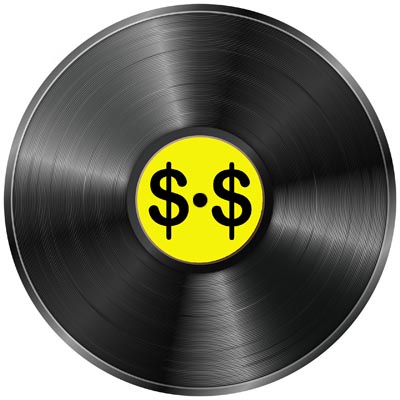 Vinyl records have made a comeback in recent years, and as a result, people are often searching for information about them online. One of the most popular searches, oddly enough, is for the phrase most valuable vinyl records.
Vinyl records have made a comeback in recent years, and as a result, people are often searching for information about them online. One of the most popular searches, oddly enough, is for the phrase most valuable vinyl records.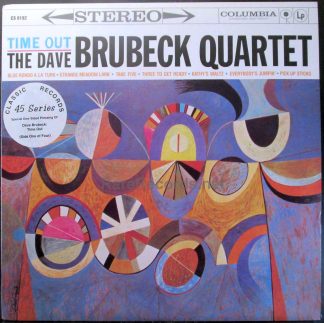
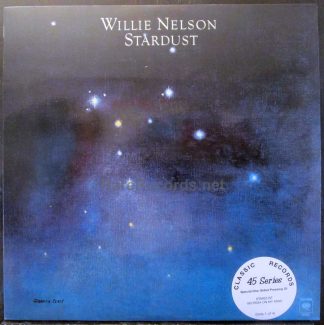
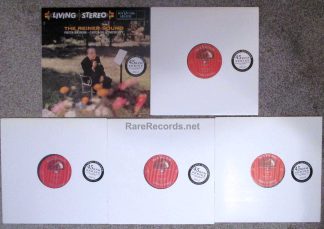
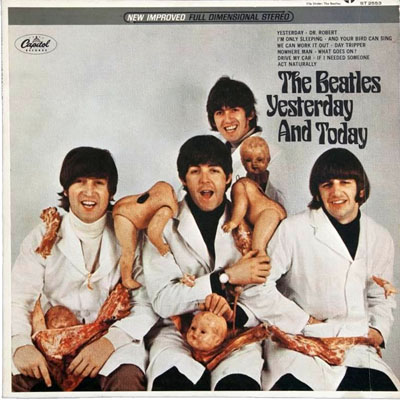
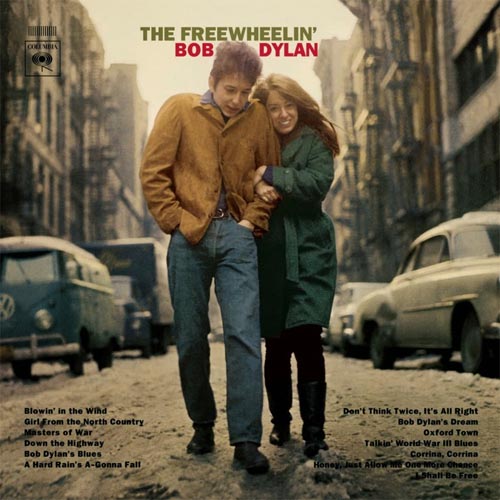 Bob Dylan – The Freewheelin’ Bob Dylan with withdrawn tracks (1963) $35,000 – Bob Dylan’s first album, released in 1962, drew some critical notice but didn’t sell well enough to make the Billboard charts. His second album, The Freewheelin’ Bob Dylan, on the other hand, drew attention and sold well enough to reach #22 on the American Billboard album chart.
Bob Dylan – The Freewheelin’ Bob Dylan with withdrawn tracks (1963) $35,000 – Bob Dylan’s first album, released in 1962, drew some critical notice but didn’t sell well enough to make the Billboard charts. His second album, The Freewheelin’ Bob Dylan, on the other hand, drew attention and sold well enough to reach #22 on the American Billboard album chart.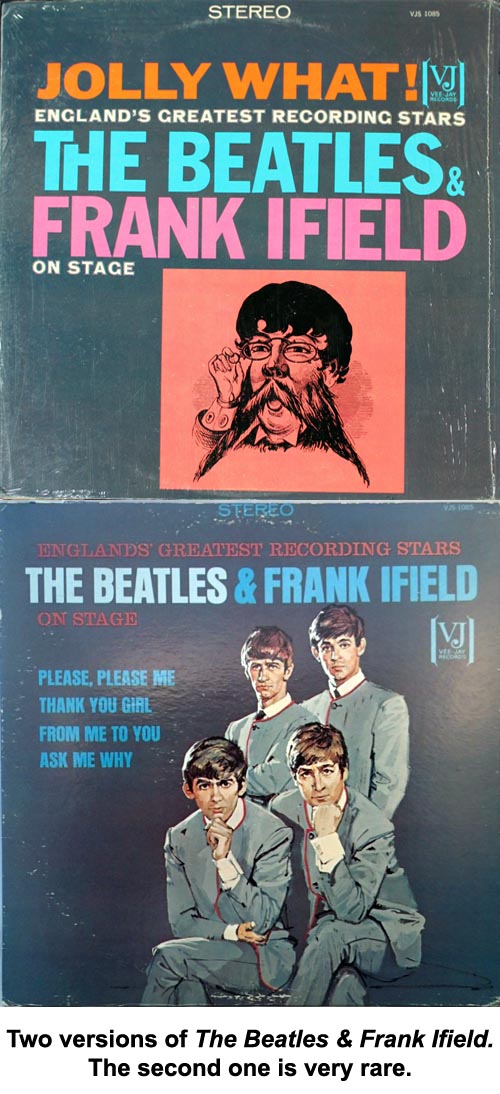 The Beatles and Frank Ifield On Stage (1964) $30,000 – When the Beatles first started releasing records in Britain, their UK label, Parlophone, offered their contract to the label’s American counterpart, Capitol. Capitol declined the offer, as English acts hadn’t sold particularly well in the U.S. up to that point.
The Beatles and Frank Ifield On Stage (1964) $30,000 – When the Beatles first started releasing records in Britain, their UK label, Parlophone, offered their contract to the label’s American counterpart, Capitol. Capitol declined the offer, as English acts hadn’t sold particularly well in the U.S. up to that point.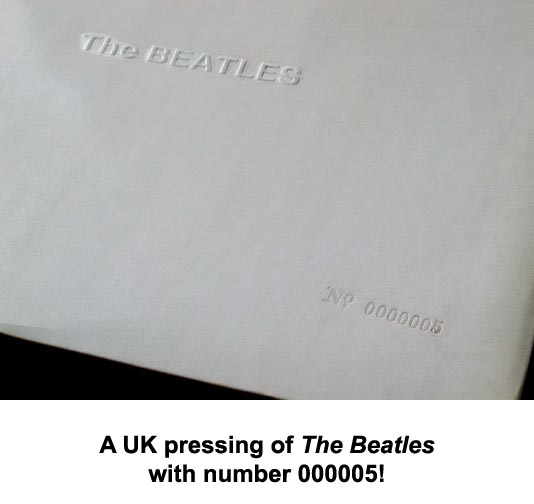 The Beatles – The Beatles (aka “The White Album”) low-numbered copies (1968) $10,000+ – After the 1967 LP Sergeant Pepper’s Lonely Hearts Club Band, an album that had an unusually elaborate cover, the Beatles went minimalist on their 1968 follow-up. Titled simply The Beatles, the album had a cover that was all white, though the name of the band was embossed on the cover.
The Beatles – The Beatles (aka “The White Album”) low-numbered copies (1968) $10,000+ – After the 1967 LP Sergeant Pepper’s Lonely Hearts Club Band, an album that had an unusually elaborate cover, the Beatles went minimalist on their 1968 follow-up. Titled simply The Beatles, the album had a cover that was all white, though the name of the band was embossed on the cover.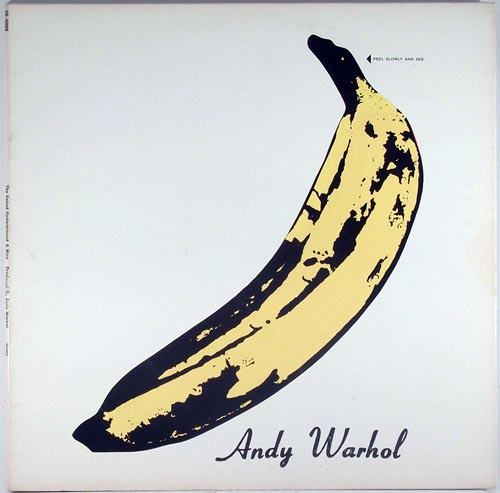 The Velvet Underground & Nico – The Velvet Underground & Nico (1966) stereo pressing without the song “Sunday Morning” $22,000 – The 1966 debut by the Velvet Underground, the self-titled The Velvet Underground & Nico, sold poorly but remains one of the most influential albums of all time.
The Velvet Underground & Nico – The Velvet Underground & Nico (1966) stereo pressing without the song “Sunday Morning” $22,000 – The 1966 debut by the Velvet Underground, the self-titled The Velvet Underground & Nico, sold poorly but remains one of the most influential albums of all time.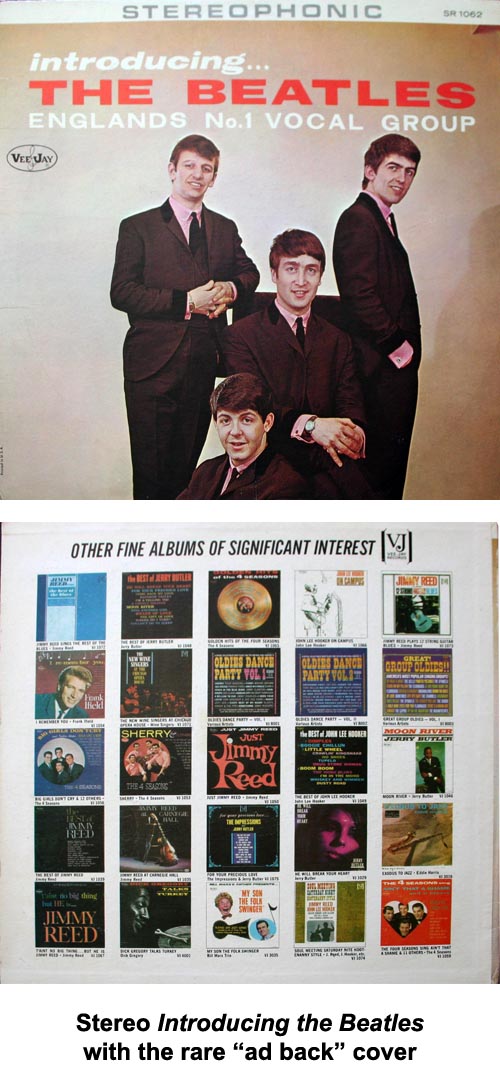 The Beatles – Introducing the Beatles stereo with “ad back” cover (1964) $15,000 – Yes, another Beatles album, and another album from the misfit label Vee Jay. Vee Jay had acquired the rights to an album’s worth of Beatles songs (released as Please Please Me in the UK) in 1963, but due to the poor sales of several singles, the label, which was strapped for cash, decided not to release the album.
The Beatles – Introducing the Beatles stereo with “ad back” cover (1964) $15,000 – Yes, another Beatles album, and another album from the misfit label Vee Jay. Vee Jay had acquired the rights to an album’s worth of Beatles songs (released as Please Please Me in the UK) in 1963, but due to the poor sales of several singles, the label, which was strapped for cash, decided not to release the album.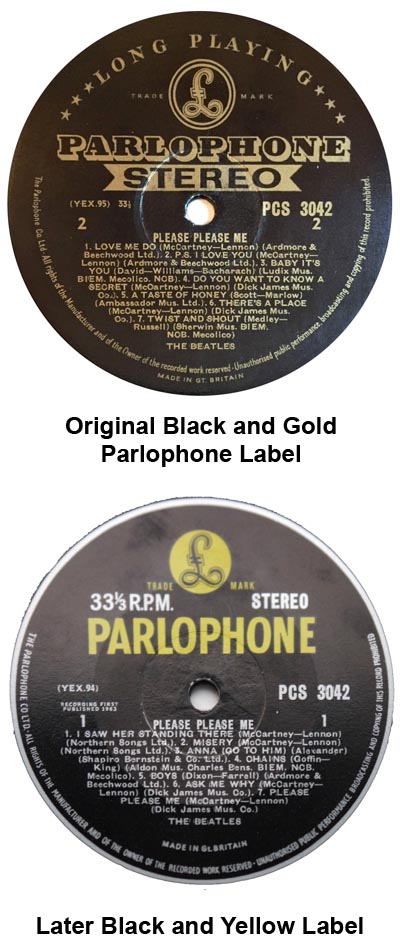 The Beatles – Please Please Me UK stereo with black and gold label (1963) $21,000 – The Beatles first album, Please Please Me, was released in Britain nearly a year before its U.S. release as Introducing the Beatles. The album was initially released in March, 1963 in the UK on the Parlophone label, and first pressings were available only in mono.
The Beatles – Please Please Me UK stereo with black and gold label (1963) $21,000 – The Beatles first album, Please Please Me, was released in Britain nearly a year before its U.S. release as Introducing the Beatles. The album was initially released in March, 1963 in the UK on the Parlophone label, and first pressings were available only in mono. Stonewall – Stonewall (1976) $14,000 – You may not have ever heard of a band called Stonewall, and that’s not surprising. They released only one album, the self-titled Stonewall in 1976, and it’s not even fair to suggest that that album was even properly released.
Stonewall – Stonewall (1976) $14,000 – You may not have ever heard of a band called Stonewall, and that’s not surprising. They released only one album, the self-titled Stonewall in 1976, and it’s not even fair to suggest that that album was even properly released.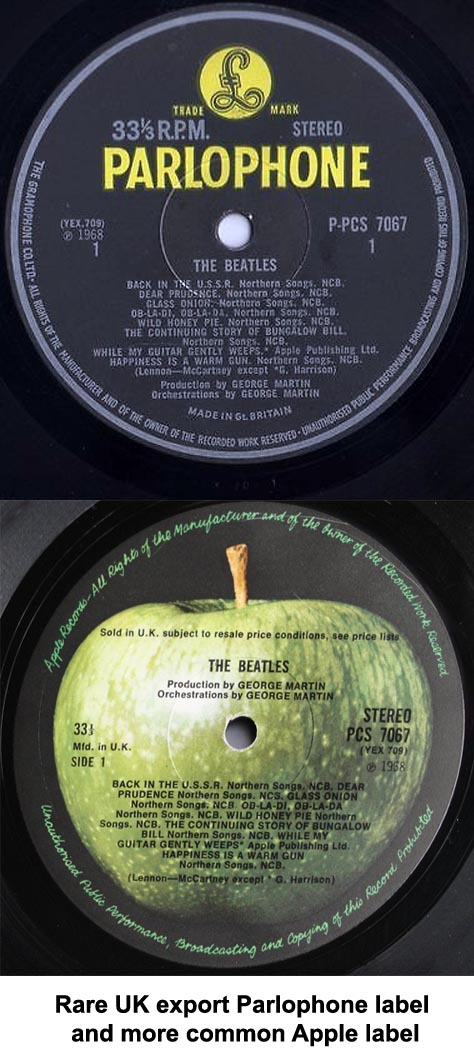 The Beatles – The Beatles (aka “The White Album”) UK export copies (1968) $10,000+ – Yes, the White Album appears on this list again. This time, it’s not the number on the cover that matters (though it might affect the price.) This particular version of the White Album is the version that Parlophone Records in Britain made especially for export.
The Beatles – The Beatles (aka “The White Album”) UK export copies (1968) $10,000+ – Yes, the White Album appears on this list again. This time, it’s not the number on the cover that matters (though it might affect the price.) This particular version of the White Album is the version that Parlophone Records in Britain made especially for export. Beatles – Yesterday and Today red Capitol “target” label (1971) – Yes, another pressing of Yesterday and Today by the Beatles qualifies as one of the most valuable vinyl records, but this one is not a Butcher Cover.
Beatles – Yesterday and Today red Capitol “target” label (1971) – Yes, another pressing of Yesterday and Today by the Beatles qualifies as one of the most valuable vinyl records, but this one is not a Butcher Cover.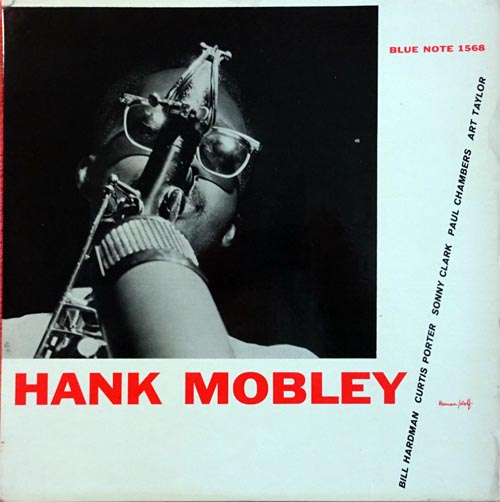 Hank Mobley – Hank Mobley Blue Note 1568 (1957) – $10,000 – Hank Mobley was a tenor saxophone player who had a long career, the early part of which was spent with Blue Note Records of New York City. Many of Blue Note’s releases from the 1950s have long been sought out by collectors, and first pressings of a number of their titles from the 1950s routinely sell for more than $1000.
Hank Mobley – Hank Mobley Blue Note 1568 (1957) – $10,000 – Hank Mobley was a tenor saxophone player who had a long career, the early part of which was spent with Blue Note Records of New York City. Many of Blue Note’s releases from the 1950s have long been sought out by collectors, and first pressings of a number of their titles from the 1950s routinely sell for more than $1000.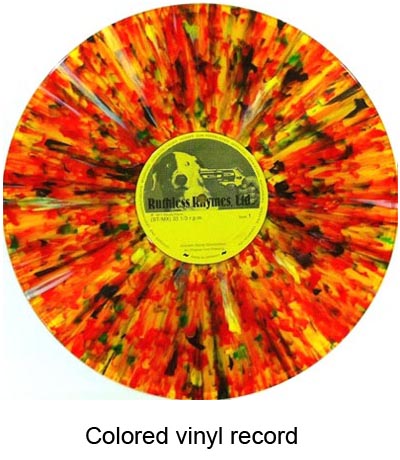 If you have spent any time around records, either 45 RPM singles or albums, you might have encountered the term “colored vinyl records.” You might think that’s a strange question; after all, all records are colored vinyl records, aren’t they? And aren’t they all black?
If you have spent any time around records, either 45 RPM singles or albums, you might have encountered the term “colored vinyl records.” You might think that’s a strange question; after all, all records are colored vinyl records, aren’t they? And aren’t they all black?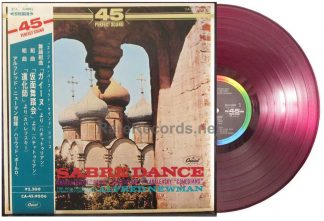
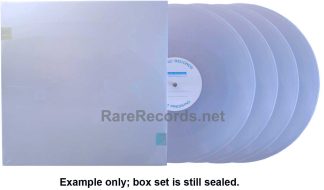
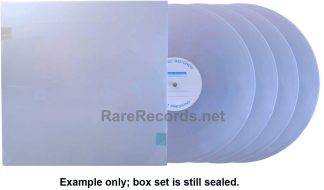
 In about 1920, the then-new Vocalion records pressed colored vinyl records in the form of a reddish-brown, mostly to distinguish their products from others in the marketplace. While the company claimed that their records were more durable than the black ones offered by their competitors, the red color was mostly a marketing ploy.
In about 1920, the then-new Vocalion records pressed colored vinyl records in the form of a reddish-brown, mostly to distinguish their products from others in the marketplace. While the company claimed that their records were more durable than the black ones offered by their competitors, the red color was mostly a marketing ploy. Because of the way the vinyl was mixed, no two records, including those pressed consecutively, were alike. Though the tiny label had no artists of note on their roster, their records are moderately collectible today simply because of their unusual appearance.
Because of the way the vinyl was mixed, no two records, including those pressed consecutively, were alike. Though the tiny label had no artists of note on their roster, their records are moderately collectible today simply because of their unusual appearance.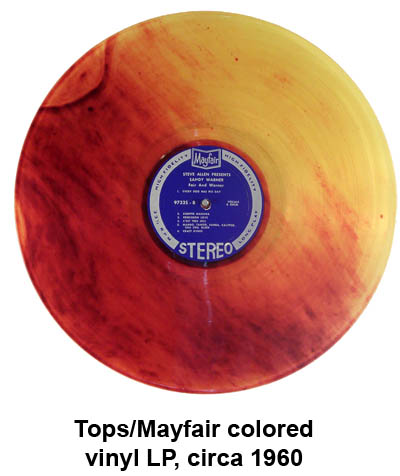 There were not a lot of
There were not a lot of 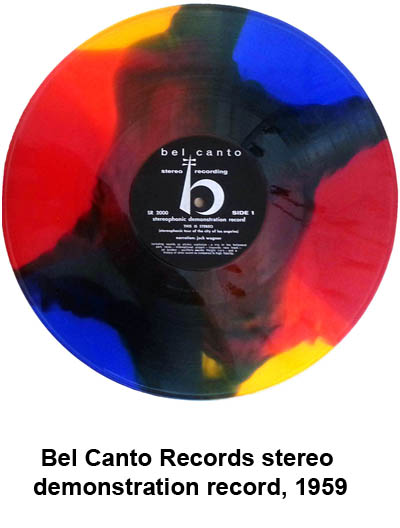 A short-lived record label from Columbus, Ohio, Bel Canto, arrived on the scene in the late 1950s. Bel Canto was an odd label in a number of ways. First of all, they were located in Ohio, away from the music scenes on either coast.
A short-lived record label from Columbus, Ohio, Bel Canto, arrived on the scene in the late 1950s. Bel Canto was an odd label in a number of ways. First of all, they were located in Ohio, away from the music scenes on either coast.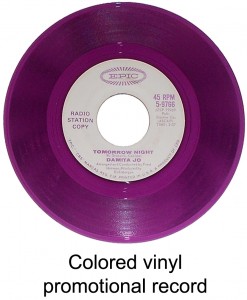 In the 1960s, a few record companies, notably Columbia Records and their affiliated label, Epic, began pressing colored vinyl records for promotional use.
In the 1960s, a few record companies, notably Columbia Records and their affiliated label, Epic, began pressing colored vinyl records for promotional use.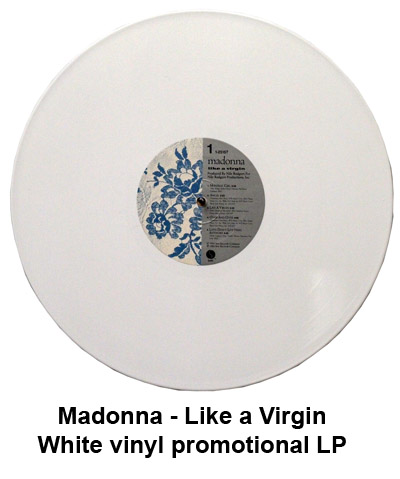 Occasionally, starting in the 1970s and continuing to the present day, other record labels have pressed some of their titles as colored vinyl records exclusively for promotional use.
Occasionally, starting in the 1970s and continuing to the present day, other record labels have pressed some of their titles as colored vinyl records exclusively for promotional use.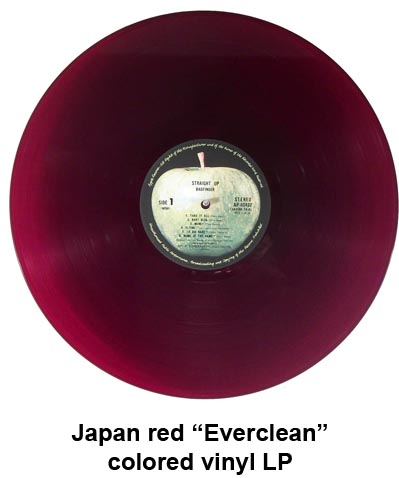 In 1958 in Japan, Toshiba Musical Industries, one of the two or three large manufacturers of records in Japan, began pressing colored vinyl records, with the introduction of their red, “Everclean” vinyl.
In 1958 in Japan, Toshiba Musical Industries, one of the two or three large manufacturers of records in Japan, began pressing colored vinyl records, with the introduction of their red, “Everclean” vinyl.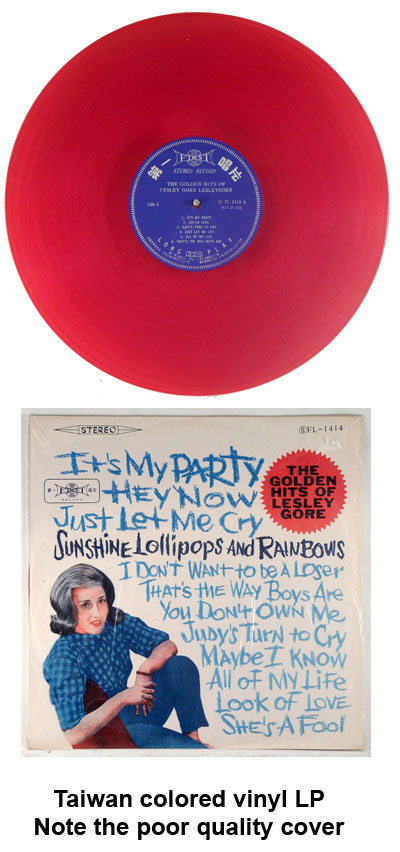 In the 1960s, thousands of titles were released in Taiwan as colored vinyl records. None of the record companies in Taiwan seem to have had legitimate licensing arrangements with major American or European record labels, however, making all of these titles unauthorized.
In the 1960s, thousands of titles were released in Taiwan as colored vinyl records. None of the record companies in Taiwan seem to have had legitimate licensing arrangements with major American or European record labels, however, making all of these titles unauthorized.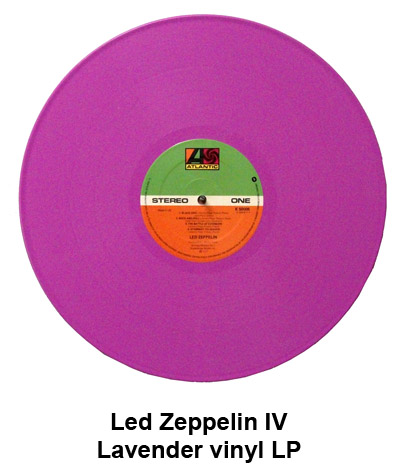 Here’s a list of a few of the titles pressed on colored vinyl in the late 1970s (not comprehensive):
Here’s a list of a few of the titles pressed on colored vinyl in the late 1970s (not comprehensive): The majority of colored vinyl records are pressed using a single color – red, green, blue, etc. Occasionally, there have been examples of records pressed using more than one color or a color that wouldn’t be considered a “normal” color.
The majority of colored vinyl records are pressed using a single color – red, green, blue, etc. Occasionally, there have been examples of records pressed using more than one color or a color that wouldn’t be considered a “normal” color.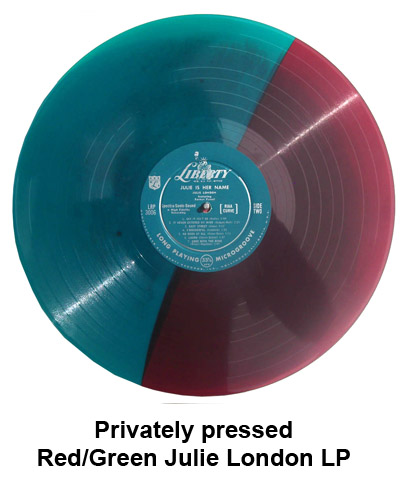 Sometimes, a record company or pressing plant employee will take it upon themselves to press colored vinyl records, even though they have not been authorized to do so by their employer. They may do this for their own use, or with the intention of secretly reselling the records at a profit at some point in the future.
Sometimes, a record company or pressing plant employee will take it upon themselves to press colored vinyl records, even though they have not been authorized to do so by their employer. They may do this for their own use, or with the intention of secretly reselling the records at a profit at some point in the future. Since collectors have demonstrated a willingness to buy just about anything by their favorite artist, a number of unscrupulous individuals have taken it upon themselves to issue quite a few colored vinyl records by famous artists.
Since collectors have demonstrated a willingness to buy just about anything by their favorite artist, a number of unscrupulous individuals have taken it upon themselves to issue quite a few colored vinyl records by famous artists.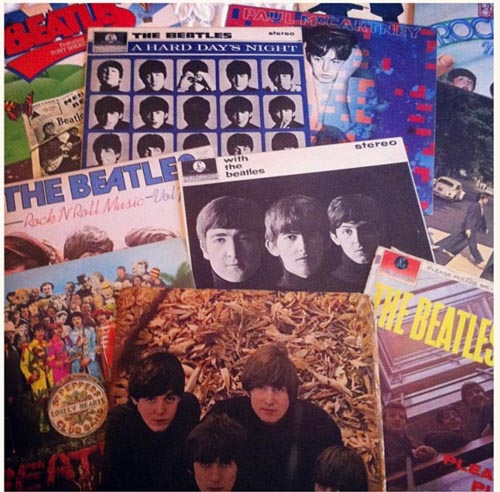 When it comes to record collecting, some artists are more popular with collectors than others. No artist, however, is quite as collectible as the Beatles, though Elvis Presley comes close. Despite being available for more than fifty years and with most of their records never going out of print, Beatles albums draw more interest, and sell for more money, than those by any other artist.
When it comes to record collecting, some artists are more popular with collectors than others. No artist, however, is quite as collectible as the Beatles, though Elvis Presley comes close. Despite being available for more than fifty years and with most of their records never going out of print, Beatles albums draw more interest, and sell for more money, than those by any other artist.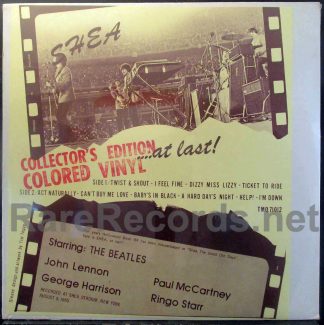
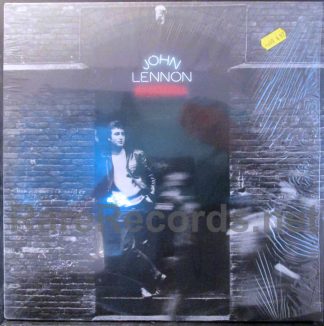
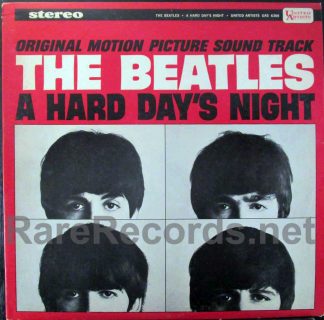
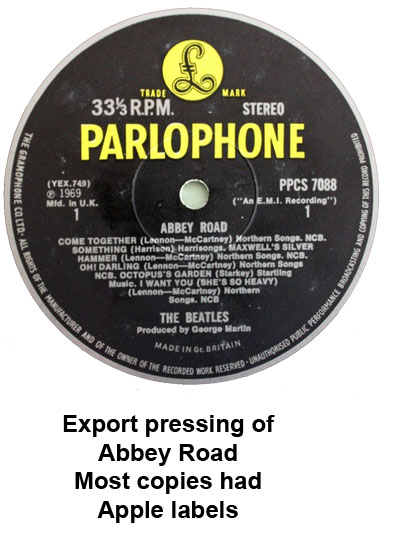 Keep in mind that Beatles albums in Britain were issued in both mono and stereo through 1969 (Yellow Submarine) and that both mono and stereo pressings would have their own sequence of stamper numbers. At the time of the release of Please Please Me in early 1963, mono records outsold their stereo counterparts by a ratio of nearly 100:1, making early stereo pressings quite scarce in comparison with mono copies. This ratio changed through the 1960s, and by 1968, most records sold were in stereo, making mono pressings of later Beatles albums, such as the White Album or Yellow Submarine much harder to find than stereo pressings.
Keep in mind that Beatles albums in Britain were issued in both mono and stereo through 1969 (Yellow Submarine) and that both mono and stereo pressings would have their own sequence of stamper numbers. At the time of the release of Please Please Me in early 1963, mono records outsold their stereo counterparts by a ratio of nearly 100:1, making early stereo pressings quite scarce in comparison with mono copies. This ratio changed through the 1960s, and by 1968, most records sold were in stereo, making mono pressings of later Beatles albums, such as the White Album or Yellow Submarine much harder to find than stereo pressings.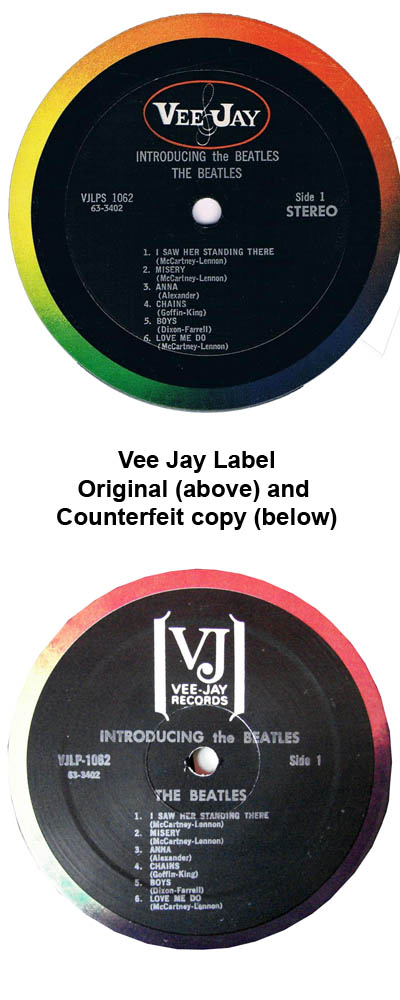 While the history of Beatles albums in the UK is pretty straightforward, with all albums being released on the Parlophone label through 1967 and on the Beatles’ own Apple label thereafter, the story of Beatles albums in the United States is a bit more complex.
While the history of Beatles albums in the UK is pretty straightforward, with all albums being released on the Parlophone label through 1967 and on the Beatles’ own Apple label thereafter, the story of Beatles albums in the United States is a bit more complex. Yet another album combined four Beatles songs that had previously been issued only as singles with a number of songs by singer Frank Ifield and was given the awkward and misleading title of The Beatles and Frank Ifield on Stage, which gave buyers the mistaken impression that the album was recorded live in concert. This album was issued with two different covers, and the second one, which features a drawing of the Beatles (but no Frank Ifield) on the cover, is among the rarest of all Beatles albums.
Yet another album combined four Beatles songs that had previously been issued only as singles with a number of songs by singer Frank Ifield and was given the awkward and misleading title of The Beatles and Frank Ifield on Stage, which gave buyers the mistaken impression that the album was recorded live in concert. This album was issued with two different covers, and the second one, which features a drawing of the Beatles (but no Frank Ifield) on the cover, is among the rarest of all Beatles albums.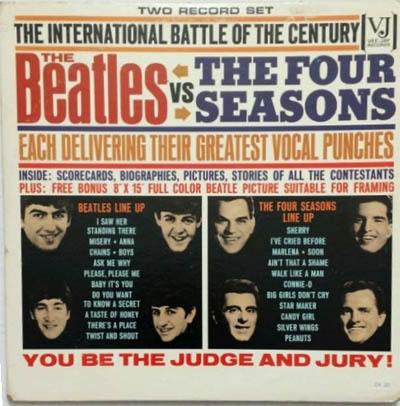 Introducing the Beatles (January 1964) – This was the same album as Please Please Me in the UK, with two songs, Please Please Me, and Ask Me Why, removed to cut the songs from 14 to 12. After a lawsuit, those two songs were added back to the album, and the songs Love Me Do and PS I Love You were removed.
Introducing the Beatles (January 1964) – This was the same album as Please Please Me in the UK, with two songs, Please Please Me, and Ask Me Why, removed to cut the songs from 14 to 12. After a lawsuit, those two songs were added back to the album, and the songs Love Me Do and PS I Love You were removed.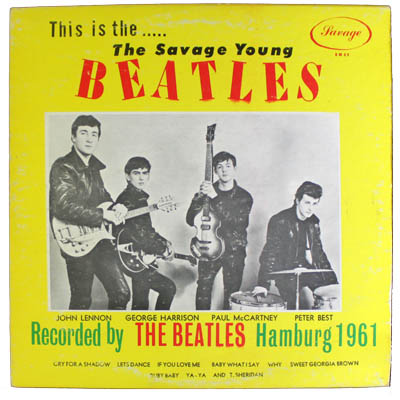 Prior to signing their contract to record for Parlophone in early 1962, the Beatles recorded some songs in Germany as a backup band for British singer Tony Sheridan. These songs, which included “My Bonnie,” with Sheridan on vocals, and “Ain’t She Sweet,” with John Lennon singing, were licensed by a number of record companies that combined those songs with the work of other, largely unknown bands in order to release a “Beatles” album at the height of Beatlemania in 1964.
Prior to signing their contract to record for Parlophone in early 1962, the Beatles recorded some songs in Germany as a backup band for British singer Tony Sheridan. These songs, which included “My Bonnie,” with Sheridan on vocals, and “Ain’t She Sweet,” with John Lennon singing, were licensed by a number of record companies that combined those songs with the work of other, largely unknown bands in order to release a “Beatles” album at the height of Beatlemania in 1964. Once Capitol Records secured the rights to release Beatles albums, they began to release them with gusto. The record-buying public had demonstrated that they were willing to buy albums in quantities previously unseen in the music industry, so Capitol set out to give the public as many Beatles albums as they were willing to buy.
Once Capitol Records secured the rights to release Beatles albums, they began to release them with gusto. The record-buying public had demonstrated that they were willing to buy albums in quantities previously unseen in the music industry, so Capitol set out to give the public as many Beatles albums as they were willing to buy.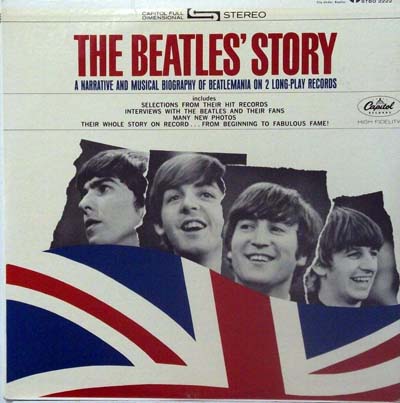 The Beatles Story (unique U.S. release) (November 1964) – This two record set consisted of interviews and portions of press conferences, along with song segments and narration that told the story of the Beatles rise to success.
The Beatles Story (unique U.S. release) (November 1964) – This two record set consisted of interviews and portions of press conferences, along with song segments and narration that told the story of the Beatles rise to success.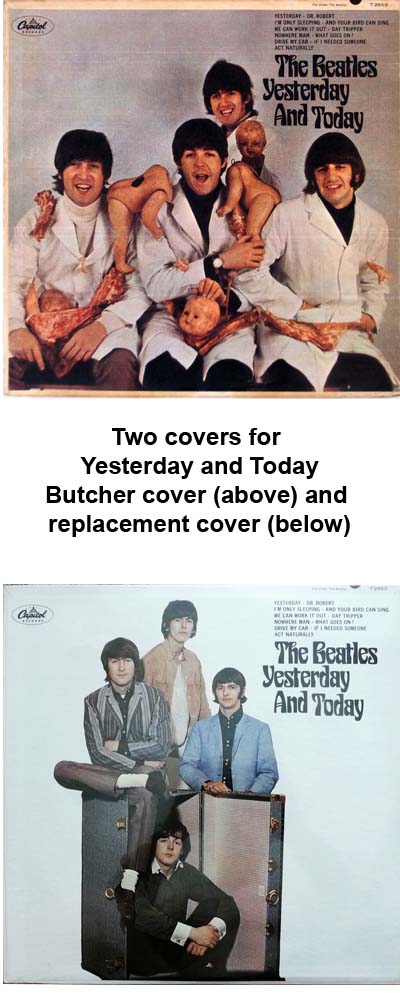 The 1966 album, Yesterday and Today, was a unique release in the Beatles catalog as well as a unique headache for Capitol Records and it became the only Beatles albums to actually lose money on its initial release, despite the fact that it reached #1 on the album charts.
The 1966 album, Yesterday and Today, was a unique release in the Beatles catalog as well as a unique headache for Capitol Records and it became the only Beatles albums to actually lose money on its initial release, despite the fact that it reached #1 on the album charts.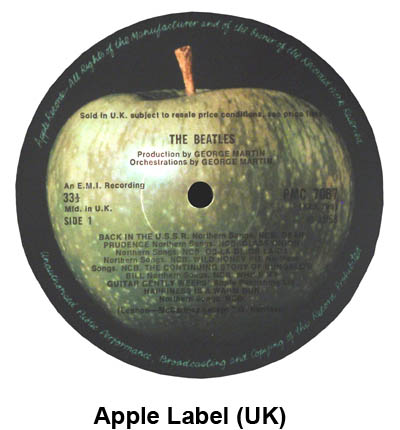 In 1968, the Beatles created their own record label, Apple Records, to be used for their own releases as well as those by other artists signed to the label. Beatles albums released on the Apple label were pressed by Parlophone in Britain and by Capitol in the United States and were identical in title, cover art, and content.
In 1968, the Beatles created their own record label, Apple Records, to be used for their own releases as well as those by other artists signed to the label. Beatles albums released on the Apple label were pressed by Parlophone in Britain and by Capitol in the United States and were identical in title, cover art, and content.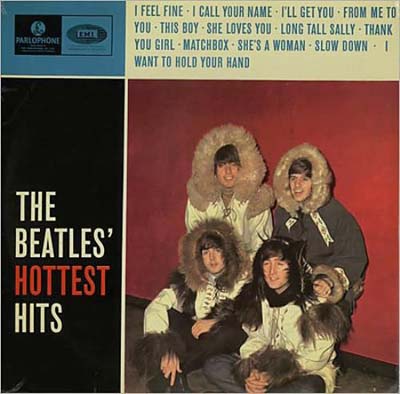 Beatles albums issued in the 1960s in other countries generally followed the UK format, though a few albums issued in Canada, such as Yesterday and Today, followed the U.S. format. In Japan, Beatles albums were issued in both configurations.
Beatles albums issued in the 1960s in other countries generally followed the UK format, though a few albums issued in Canada, such as Yesterday and Today, followed the U.S. format. In Japan, Beatles albums were issued in both configurations.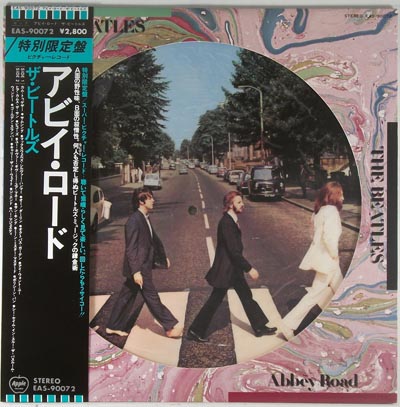 In the 1960s, the original Beatles albums from Japan, which were pressed on red vinyl, were the only albums by the band issued anywhere in the world using a color of vinyl other than black. In the late 1970s, record companies began issuing albums by a variety of artists on colored vinyl as limited edition items. These included a number of titles by the Beatles.
In the 1960s, the original Beatles albums from Japan, which were pressed on red vinyl, were the only albums by the band issued anywhere in the world using a color of vinyl other than black. In the late 1970s, record companies began issuing albums by a variety of artists on colored vinyl as limited edition items. These included a number of titles by the Beatles.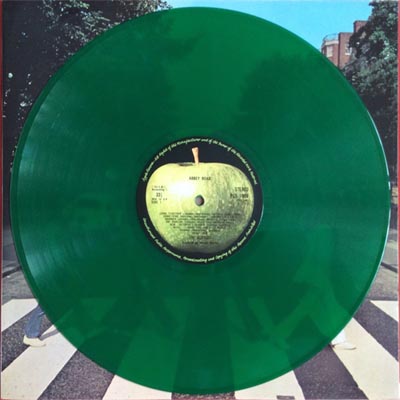 In addition to the colored vinyl albums listed above, a few experimental pressings of Beatles albums have turned up on colored vinyl over the years. These were experimental pressings that were not intended for commercial sale:
In addition to the colored vinyl albums listed above, a few experimental pressings of Beatles albums have turned up on colored vinyl over the years. These were experimental pressings that were not intended for commercial sale: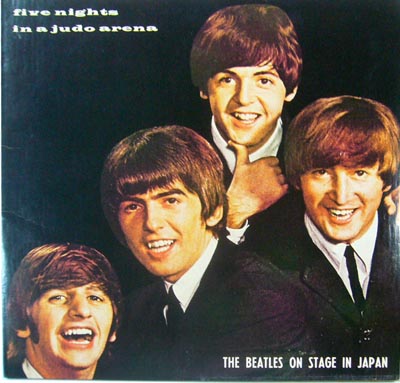 In addition to the authorized releases issued worldwide by Capitol, Parlophone, and Apple, a number of unauthorized, or “bootleg” Beatles albums have been issued by unknown parties over the years.
In addition to the authorized releases issued worldwide by Capitol, Parlophone, and Apple, a number of unauthorized, or “bootleg” Beatles albums have been issued by unknown parties over the years.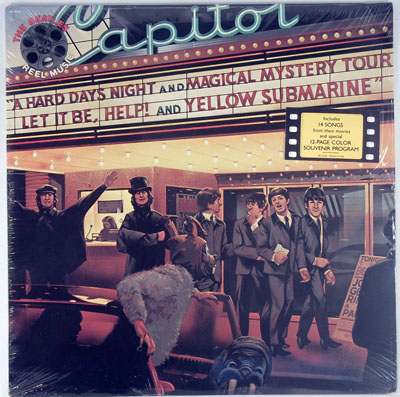 In 1982, Capitol released Reel Music, an album of songs from the Beatles films. In 1995 and 1996, three albums entitled Anthology 1, 2, and 3 were released, and these contained material that was previously only available on bootlegs.
In 1982, Capitol released Reel Music, an album of songs from the Beatles films. In 1995 and 1996, three albums entitled Anthology 1, 2, and 3 were released, and these contained material that was previously only available on bootlegs.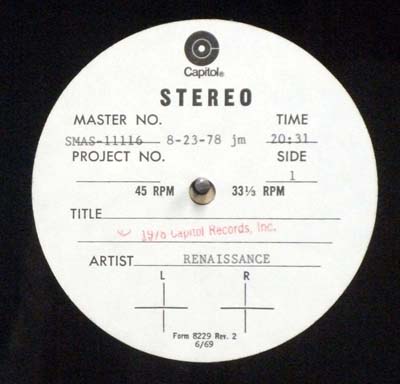 Example of an acetate label[/caption]
Example of an acetate label[/caption]
